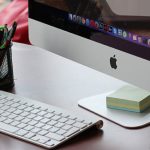Every detective movie ever, has a computer which could best be accessed through plugging in a special flash drive, or something of the type. Not only simplest does it look cool, and high tech, it’s additionally as an alternative realistic to have a USB flash drive for unlocking your Mac, or PC. There are a number of reasons for this you don’t need to type in a password all the time. you may set a really strong password, and then not need to really remember it, due to the fact you may simply unlock your PC or Mac with a USB drive and many others. Including a very strong layer of security to your system.
Table Of Content
How to set up USB Lock on PC or Mac:
Set Up USB Lock on PC or Mac
Rohos Key Logon is a software that can program a USB flash drive, a mobile phone, or even a Bluetooth device to act as the key to unlock your system. The best part about this application, is that it’s available for both Windows, and macOS devices. While it is a paid app, we can get a trial version to check it out, before having to actually register the software for continued use.
Steps we’ll have to take in order to create a USB flash drive that will let us log into our system.
Note: Running the Rohos Key Logon software on a MacBook Air, running macOS Sierra 10.12.4 Developer Beta, and while the steps follow here apply to a Mac, there should only be very minor differences when using the software on Windows.
First, download Rohos Key Logon’s free trial, and install it on your Mac. You will have to restart your Mac after the installation is complete.

Next, from the menu bar of your Mac, click on the Rohos Key Logon icon, and go to “Open Rohos Logon“. This will open up the main Rohos Key Logon window.

Here, simply click on the option that says “USB drive”. Make sure that the USB flash drive you want to use for logging in, is connected to your Mac.

In the next window, enter your system login password, and select the USB flash drive you want to use as a key, and click on “OK“.

In the next screen, you can select the action you want your computer to take if the USB flash drive is pulled out of the system. If you don’t want to keep it plugged in, simply choose “Nothing” in this screen.

However, for better security, we suggest you keep it to “Lock the Desktop“, when plugged out. This will also make it easier for you to lock your PC or Mac when you’re leaving it unattended. Now You can easily unlock your PC or Mac, by plugging in the correct USB flash drive. However, currently if someone knew your password, they’d still be able to log in to your system. If you want to eliminate the chances of this happening, simply follow the steps below:
From the Rohos Key Logon icon in the menu bar, click on “Preferences”.

Here, check the checkbox next to “Allow login only by USB key“.

This will make sure that you can only log in if the USB flash drive is present in the system. This is highly secure, but is also a little risky. You could lose your flash drive, it could break, or it could get corrupted. So, we suggest that you either don’t disable login with password, or else, have at least two USB keys that can unlock your system just in this case.
Deleting the USB Key
If we don’t want to use the USB flash drive as a key for your system anymore, we can easily remove the USB flash drive from Rohos, as well. The process is very simple:
From the Rohos Key Logon menu bar icon, click on “Open Rohos Logon“.

Here, click on “Delete Key“.

Select the USB flash drive you want to remove, and click on “Delete”.

This will remove the USB flash drive as the key to your system, and you can revert back to using your password to log into your system.
[ad type=”banner”]Rohos Key Logon comes with a 15-days trial, after which, you will have to pay $25 to register it for continued usage. If we looking for free alternatives for Windows, there are quite a number of software that we can try. However, with the exception of USB Raptor, none of the others worked properly. USB Raptor works perfectly fine, and can be used to lock/unlock your Windows PC with a USB flash drive.






